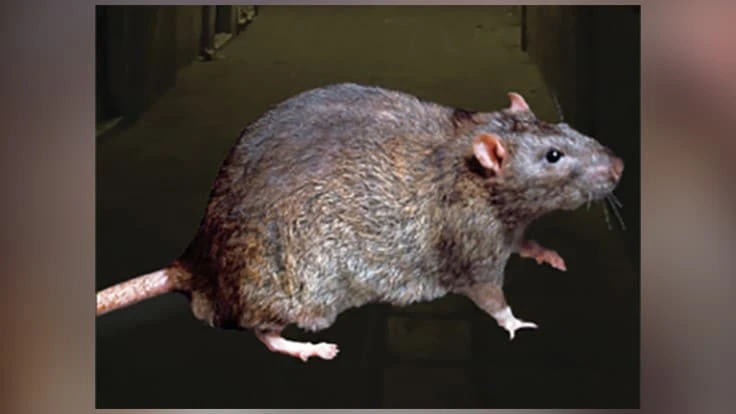
IPM is a globally used process of pest management, defined by the World Health Organization as “a common-sense approach using a hierarchy of control practices including public education, sanitation, pest exclusion, and other biological and mechanical control methods, while limiting pesticide application.” As such, it is applicable to both commercial and residential settings. However, because this “common-sense approach” should be customized to each setting, there are differences in residential and commercial IPM programs.
“The philosophy is the same, and as you evaluate the situation you take the same considerations into account,” said The Food Safety Academy President Steven Sklare. However, he said, “The circumstances will dictate differences in the programs regarding the tools to be used, the risk tolerance level of the customer, and the aspects of the program that will get the greatest emphasis.”
But, he added, “If an IPM program is to be successfully implemented in either a residential or commercial account, the customer must understand that they need to be an active participant in the program and not a passive bystander.”
Commercial Accounts. Given the differences between residential and commercial accounts, there also will be differences between different types of commercial operations, Sklare said. For example, a food processing facility will have different needs than a hotel, and both will differ from a non-food establishment.
Food facilities often have the most stringent pest management requirements as food safety is a critical concern. Thus, said Agrecom Owner Mike Altomare, in a food plant, you will need to continually be inspecting to ensure the facility is sealed, sweeps are tight, pallet areas have no rodent harborage, etc. Additionally, though, he said, baiting will be necessary, with the measuring of consumption used to determined how well the program is working. “Bait is more of a monitoring tool,” he said. If it’s not being consumed there are likely no issues; if consumed, you need to determine where the rodents are coming from and reduce that population. “That’s key,” he said.
But no matter what type of operation the facility runs, “letting rodent populations get out of hand is not an option,” said Missouri Pest Consultants Owner Terry Hoselton. This makes IPM a critical program for any establishment, whether it has a rodent problem or wants to prevent one.
In commercial accounts, customers often want to know how the IPM approach will ensure that their pest management program is compliant with both regulatory and non-regulatory standards and is focused on root cause analysis and prevention, Sklare said. But, he said, “The most common questions are usually related to tasks to be completed by the customer.” For example, while acknowledging that not all their overhead doors provide a proper seal when closed, they may question if it is really necessary to repair the ones that don’t.
Residential Accounts. When conducting IPM in residential accounts, inspections are vital to determine what and where pests are present; conducive conditions exist; and preventive or control measures are needed. In fact, Altomare said, he finds that there are generally not a lot of rodent issues in residential areas, so the primary measures are inspecting to ensure the house is tight and no potential entry points exist. Then, he said, “If I see a rodent, I address that issue.”
Recently however, because of the reduced availability of food due to the COVID-19 pandemic, rats have increased their movement into residential areas, causing a major uptick in problems and sightings. To combat this, IPM and its preventive tools, including fertility control, are being used to get populations under control, Hoselton said.
But like any bait application, fertility control needs to be part of a good IPM program in which all other options are removed. “You have to take out everything else; all trash has to be clear; all other food sources removed,” he said. “You can’t even leave crumbs on ground, because it gives them an option.”
When working with residential customers, Sklare added, it is important to clearly explain what IPM means and how the approach will reduce or eliminate pests while taking into consideration their concerns — whether that is the safety of their children and/or pets, being as environmentally friendly as possible, etc.
Like those of commercial customers, common residential questions are those related to what they need to do, he said. For example, the homeowner having a problem with squirrels gnawing holes into their attic may still question if it is really necessary to trim back trees that come in direct contact with their home.
It is just such communication that is critical when implementing IPM an any account, commercial or residential, particularly if fertility control is to be used. “It is very important to explain how and why you’re using it,” Hoselton said. “You have to explain why you are using this instead of killing them; and you need to communicate that it will take time.
Latest from Pest Control Technology
- Donny Oswalt Shares What Makes Termites a 'Tricky' Pest
- Study Finds Fecal Tests Can Reveal Active Termite Infestations
- Peachtree Pest Control Partners with Local Nonprofits to Fight Food Insecurity
- Allergy Technologies, PHA Expand ATAHC Complete Program to Protect 8,500 Homes
- Housecall Pro Hosts '25 Winter Summit Featuring Mike Rowe
- Advanced Education
- Spotted Lanternflies, BMSBs Most Problematic Invasive Pests, Poll Finds
- Ecolab Acquires Guardian Pest Solutions





